Human Resources has gotten a bad rap.
Often viewed as the disciplinary, pink-slip-toting, and unfriendly department, why would anyone want to have an HR career…on purpose?
While it’s true that bygone human resources departments were rigid and strictly process-focused, that’s not usually the case anymore.
Today’s Human Resources teams are much more focused on employee well-being. Sure, there are still processes to follow and the necessary administrative and compliance tasks. But being part of a Human Resources team in the 20th century is more, well, human centric.
Modern HR teams build positive relationships with employees, coach and support them, create an engaging and inclusive culture, and more. And that’s something a lot of people can get on board with.
Maybe you’ve been thinking about making a career move into HR.
Or perhaps you’ve worn many hats over the years and found yourself doing HR-related tasks without the official title—now you’re ready to make it official.
Whatever has you wondering how to break into HR, you’ve come to the right place.
A great place to start your HR career path is by becoming a Recruiter. Bonus: you don’t need prior recruiting experience. In fact, you can be inexperienced yet well-qualified.
At Stivers, we’ve seen plenty of professionals successfully pivot into recruiting careers because of their natural people skills, adaptability, and drive—not just their résumé.
If you’ve ever been told you’re great with people, love solving problems, or thrive under pressure, you might already have what it takes to be a recruiter.

4 Skills You Need to Jumpstart Your HR Career in Recruiting
Drive and Accountability
Great recruiters are self-starters. You’re motivated to hit goals, stay organized, and make things happen—without waiting for direction. Whether you’re filling one critical role or juggling dozens, that sense of ownership helps you stay focused and productive.
Communication and Connection
Recruiters talk to people all day (and love it). From screening candidates to collaborating with hiring managers, your ability to connect quickly and communicate clearly makes all the difference. Empathy, confidence, and curiosity go a long way toward building trust with every person you meet.
Agility and Adaptability
Recruiting is fast-paced, and priorities can shift in a heartbeat. One minute you’re scheduling interviews, the next you’re negotiating an offer. Successful recruiters are flexible, energized by change, and skilled at managing competing tasks while keeping their cool.
Organization and Follow-Through
Organization is a must. Between tracking candidates, updating databases, and following up with hiring teams, there’s a lot to juggle. Strong recruiters thrive when systems are in place, but they also know when to improvise. Staying organized ensures nothing slips through the cracks and every candidate gets a positive experience.

Different HR Roles Call for Different Strengths
Recruiting is often the first stop on a rewarding HR career path. It’s a great fit for people who are energized by connection, problem-solving, and seeing results quickly.
As you grow, those same skills can translate into roles like HR Coordinator, HR Generalist, or HR Manager—each requiring a different balance of people skills, strategy, and structure.
If you’re eager to help people succeed and enjoy working in a fast-paced, people-driven environment, recruiting could be your perfect launchpad into HR.
Ready to Build Your HR Career?
At Stivers, we help people find HR and recruiting jobs that match their natural strengths, whether you’re just starting out or taking the next step in your career.




